
Chrysotoxum cautum is a species of hoverfly. It is found in southern Britain and Europe East into the Palearctic but is normally encountered in small numbers. The larvae are thought to feed on root aphids. Adults are usually found on the edges of woodland or scrub or along hedgerows where they visit a wide range of flowers.
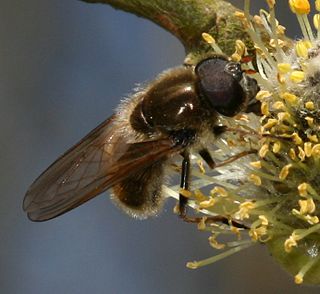
Cheilosia albipila is a European and Palearctic species of hoverfly. Like most Cheilosia it is black, and because of this may often be overlooked as a hoverfly. It is little recorded but probably widespread and common and maybe overlooked because adult flight periods are early in the year, before many hoverfly recorders are active.
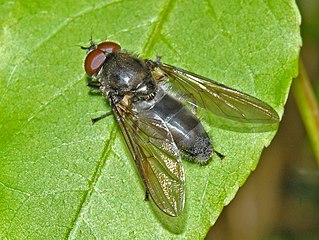
Cheilosia variabilis, common name figwort cheilosia, is a species of hoverfly belonging to the family Syrphidae.
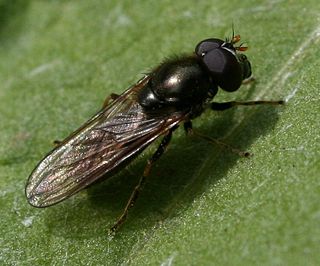
Cheilosia pagana is a Holarctic species of hoverfly. Like most Cheilosia it is black, and because of this may often be overlooked as a hoverfly. One identifying feature is a large red to orange 3rd antennal segment.
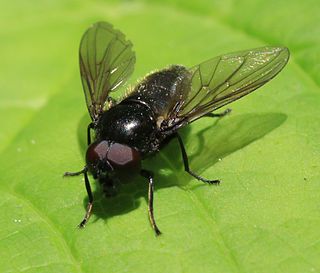
Cheilosia vicina is a hoverfly species found in the Palearctic.

Cheilosia albitarsis is an abundant European species of hoverfly. Adults can be found in spring visiting buttercup flowers and this plant is also the larval hostplant.

Cheilosia bergenstammi is a widespread European species of hoverfly. Adults can be found in summer visiting ragwort flowers and this plant is also the larval hostplant.

Cheilosia latifrons is a species of 'flower flies' or hoverflies belonging to the family Syrphidae subfamily Eristalinae.

Pipiza noctiluca is a species of Hoverfly, from the family Syrphidae, in the order Diptera.

Anasimyia lineata is a Palaearctic species of hoverfly.

Cheilosia nebulosa is a Palearctic species of hoverfly.

Cheilosia impressa is a Palearctic species of hoverfly. Like most members of its genus C. impressa is a rather small, dark insect and identification can be problematic.

Cheilosia antiqua is a European species of hoverfly.
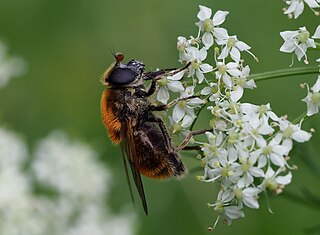
Cheilosia chrysocoma is a European species of hoverfly.
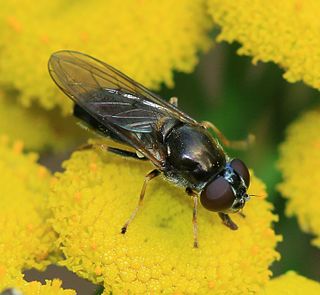
Cheilosia scutellata is a Palearctic hoverfly.
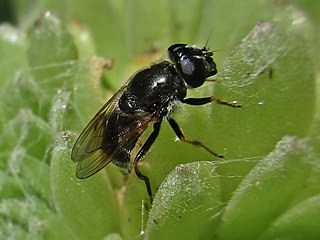
Cheilosia caerulescens is a Palearctic hoverfly.
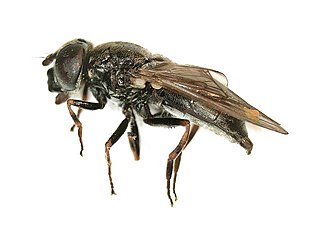
Cheilosia cynocephala is a Palearctic species of hoverfly.
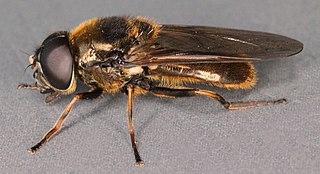
Cheilosia fraterna is a Palearctic hoverfly.
Cheilosia griseiventris is a Palearctic hoverfly. It is not considered as distinct from Cheilosia latifrons by most European workers. It is variously treated in other and older works.
Cheilosia sahlbergi is a Palearctic hoverfly.




















